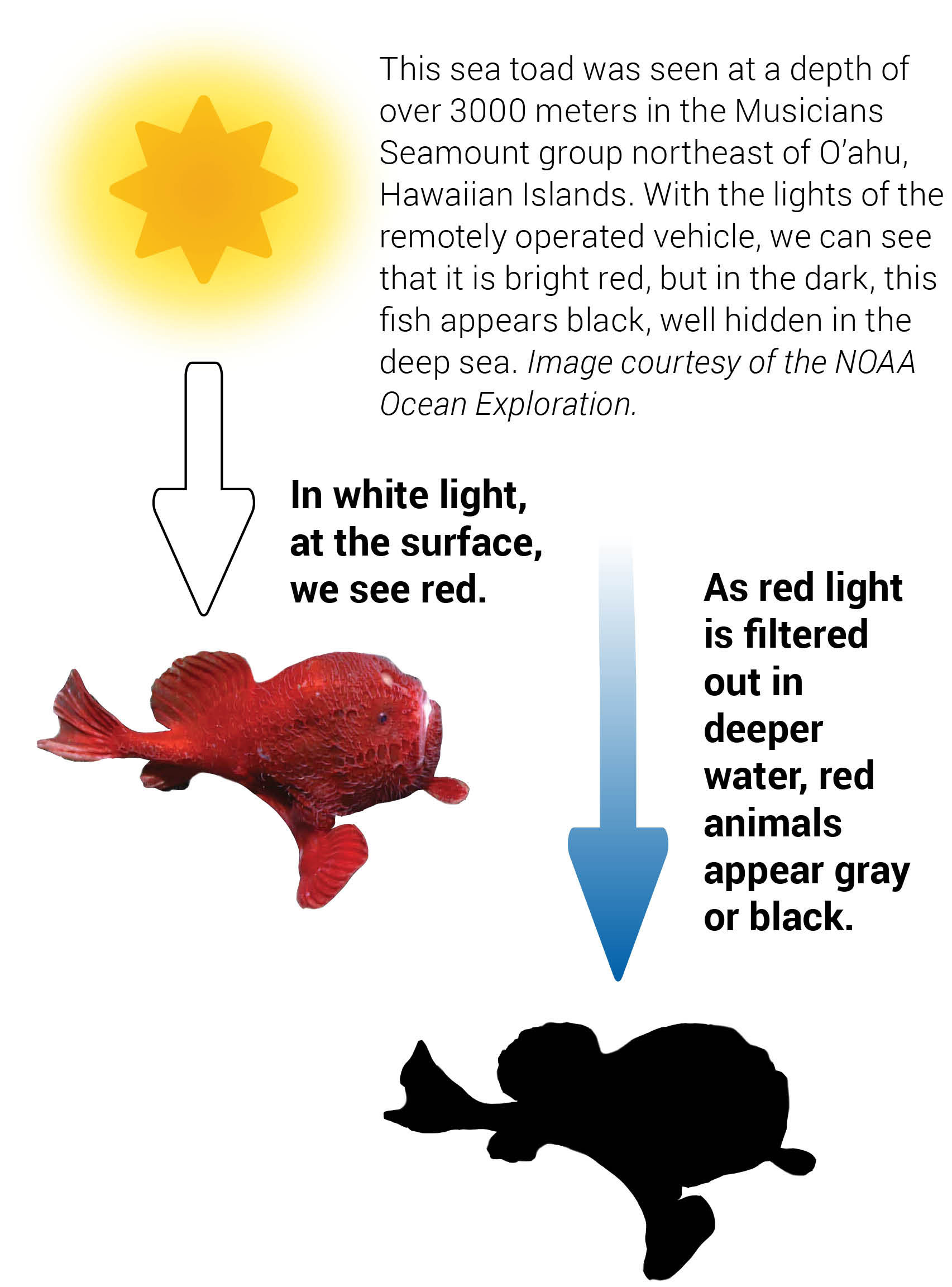Student Investigation: Light and Color in the Deep Ocean
Grade Level:
6th – 8th grade (Physical Science/Wave Properties)
Lesson Description:
Animals throughout the ocean depths are different colors and use different colors of bioluminescence. Why? How?
During this investigation, students explore the phenomenon of light and color in the ocean through sense-making. This process includes investigating how light interacts with different materials, making connections between the observed phenomenon and what happens to light as it passes through the ocean.
Lesson Components:
Standards:
Next Generation Science Standards (NGSS):
- Performance Expectation: MS-PS4-2
- Disciplinary Core Ideas: PS4.A: Wave Properties, PS4.B: Electromagnetic Radiation
Ocean Literacy Essential Principles:
- Principle 5: FC d
- Principle 7: FC b
Supporting Images/Videos:

Color in the Deep Sea. As one travels from surface waters to deeper waters, the amount and visible colors of light change, because water refracts, absorbs, and scatters wavelengths differently. Red light disappears at a shallower depth in the water column and blue light penetrates deepest. This affects how different colored pigments appear at different depths. Image courtesy of NOAA Ocean Exploration.
Download. (jpg, 339 KB)
Supplemental Materials:
Fact Sheets
- Bioluminescence (pdf, 827 KB) | en español (pdf, 345 KB) | em português (pdf, 829 KB)
- Three Mysterious Light Effects (pdf, 774 KB) | en español (pdf, 343 KB)
- Light and Color in the Deep Sea (pdf, 1.42 MB) | en español (pdf, 343 KB)
Exploration Notes – stories from the field
- The Medusa (pdf, 2.07 MB)
- Not So Bloodthirsty: An Encounter with a Vampire Squid (pdf, 848 KB)
- Lights in the Dark (pdf, 1.69 MB)
Additional NOAA resources on light and color
- Color of the Clouds [color spectrum] – NOAA Weather Service
- How far does light travel in the ocean? – NOAA Ocean Service
